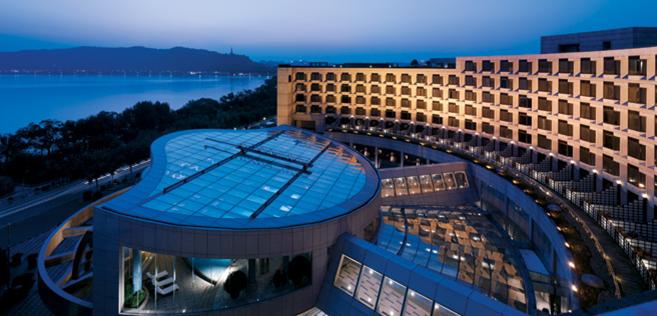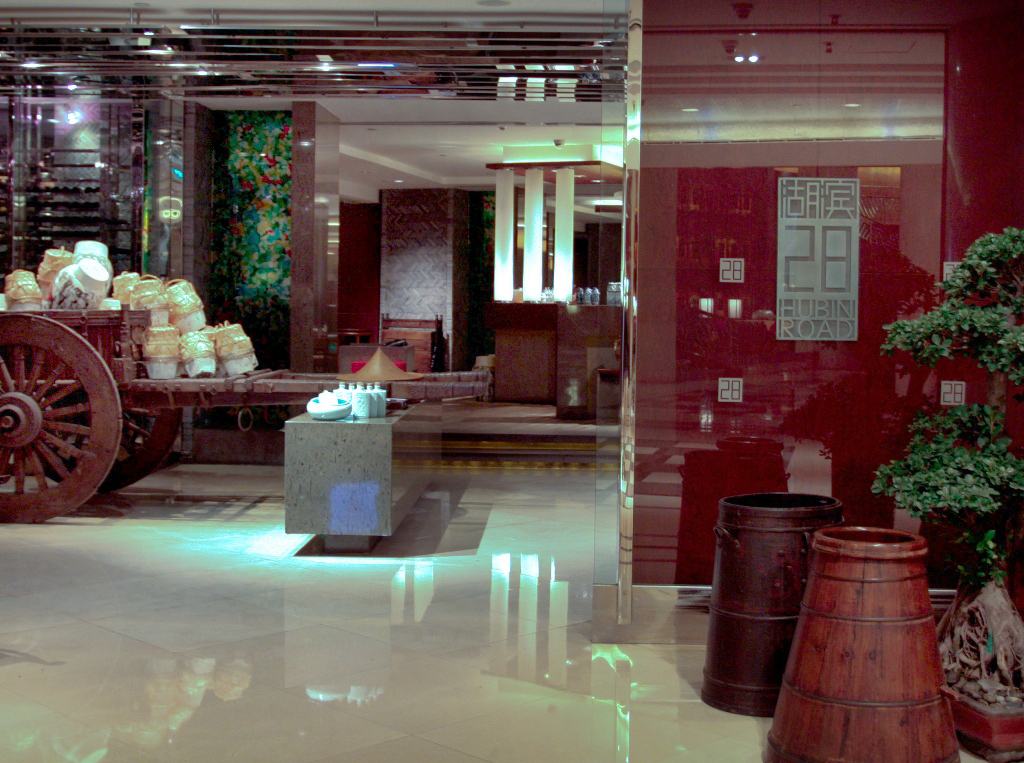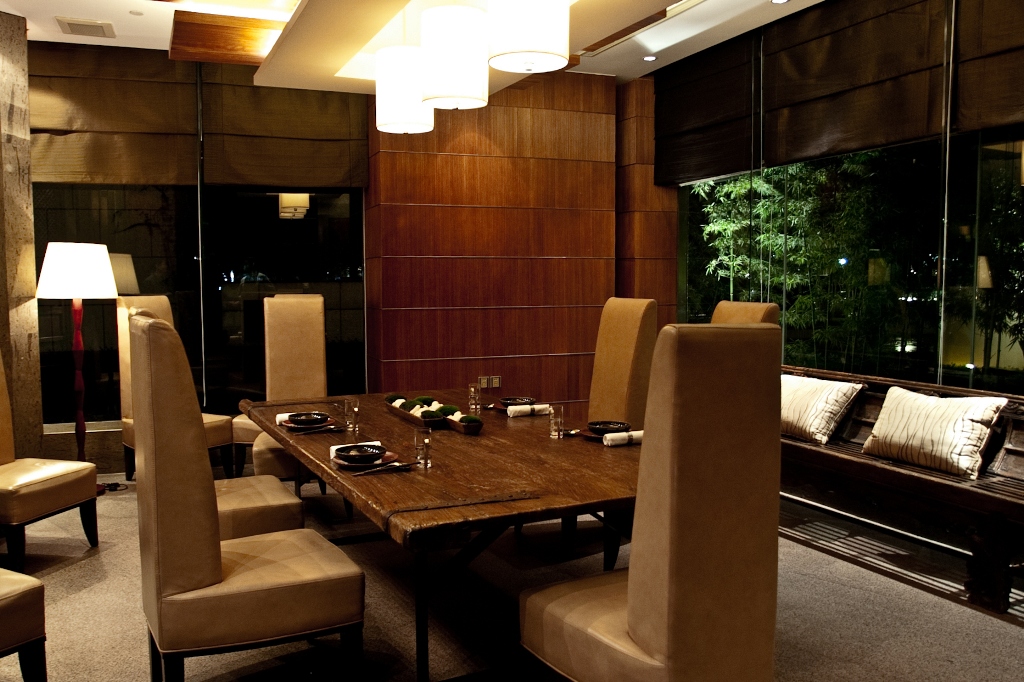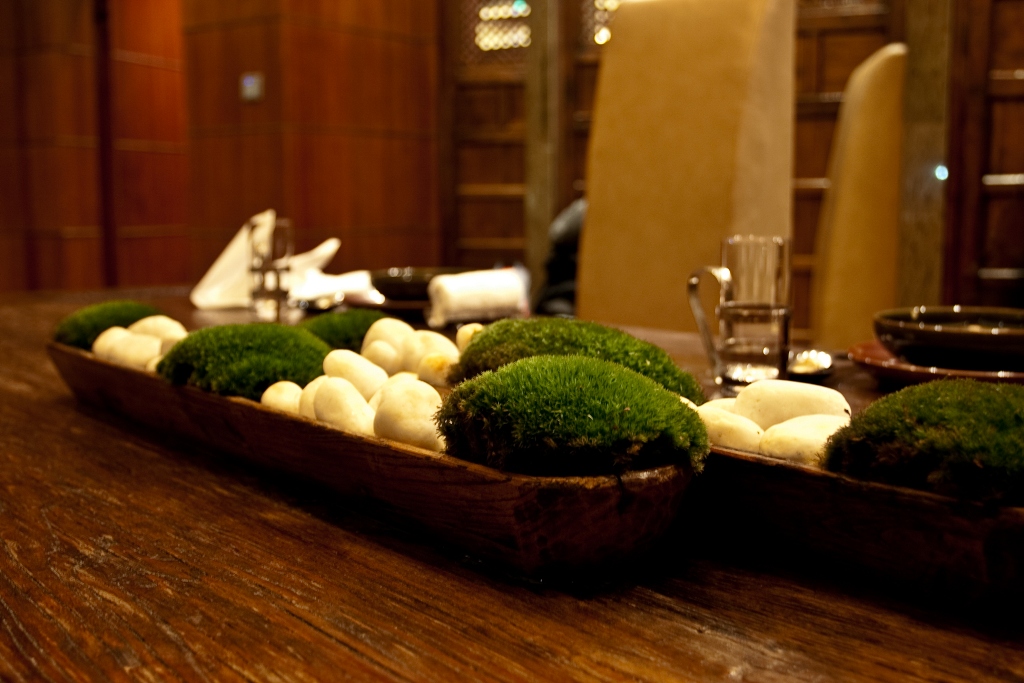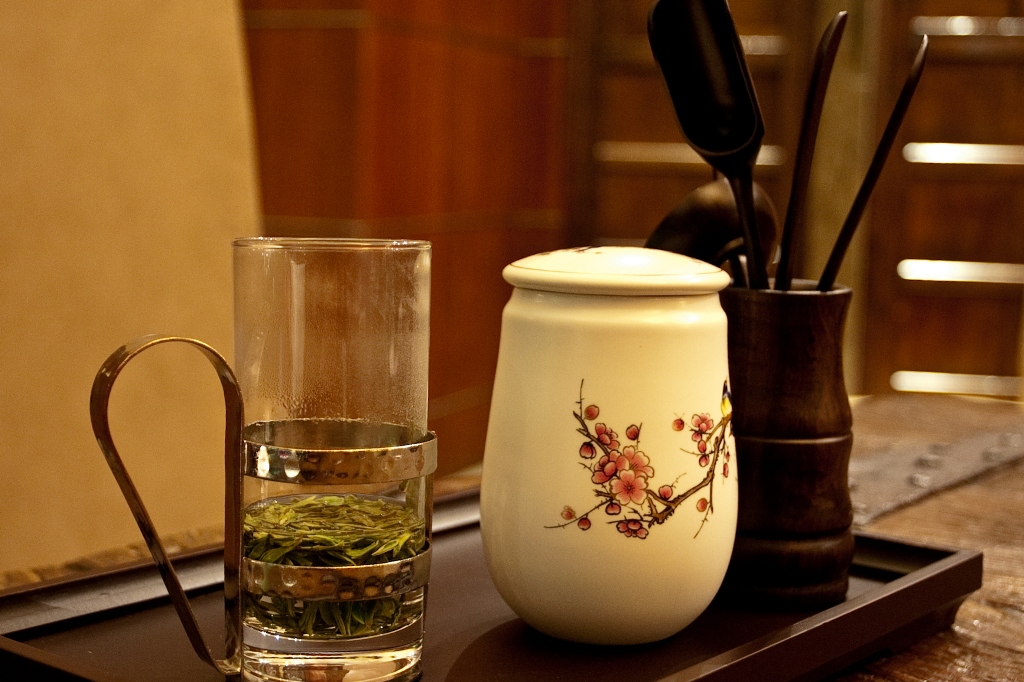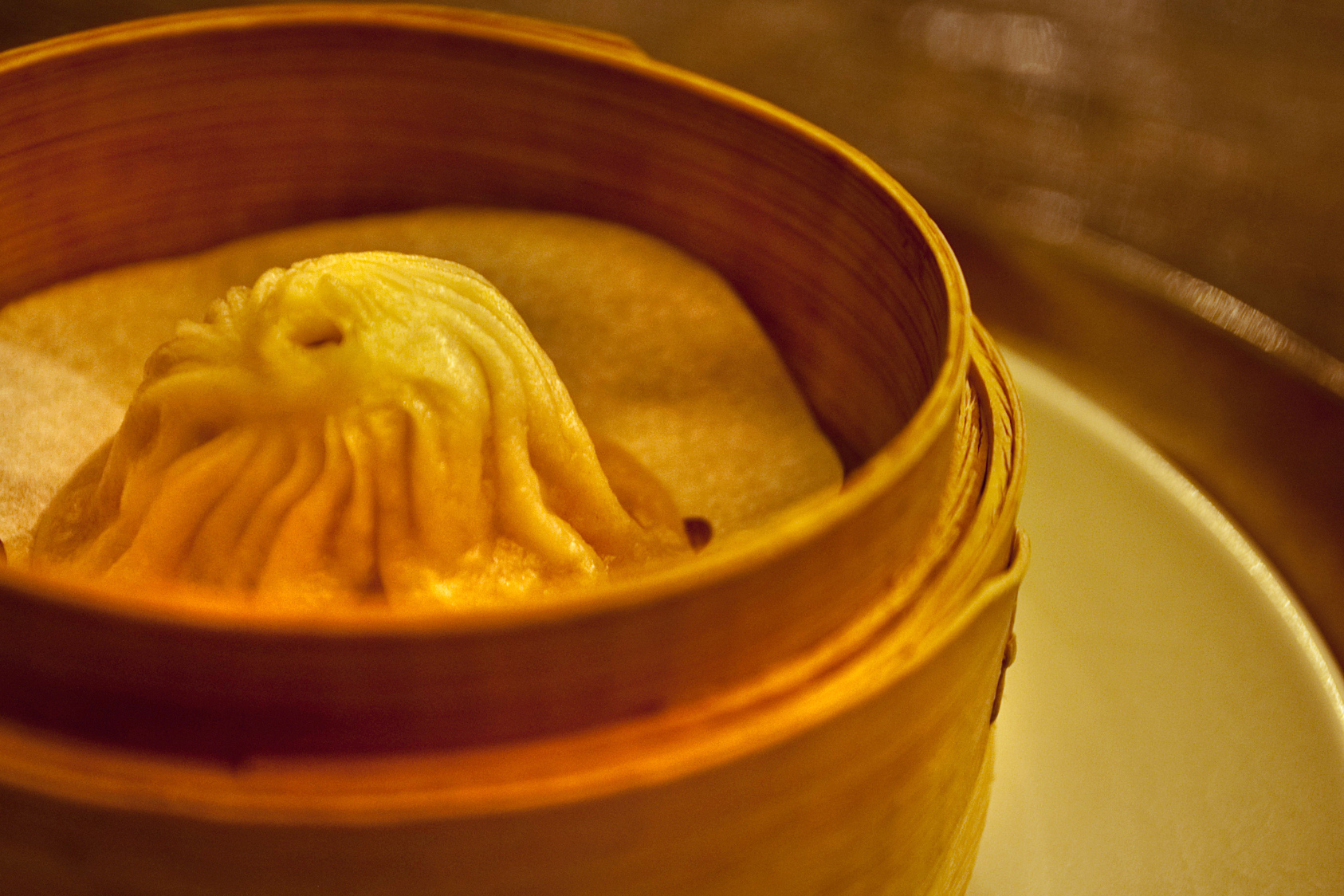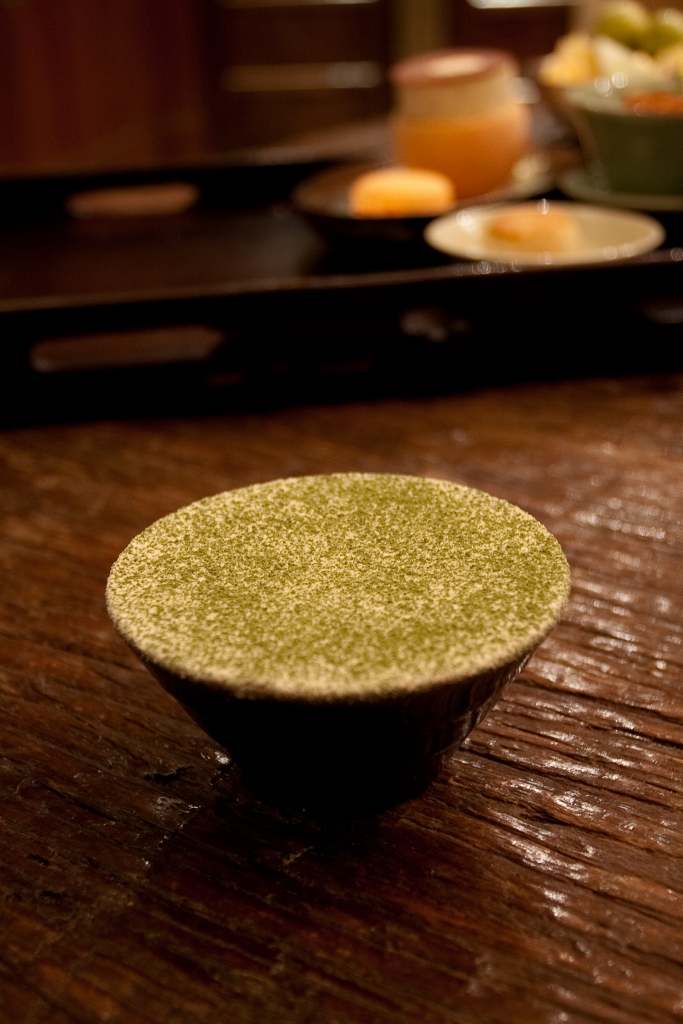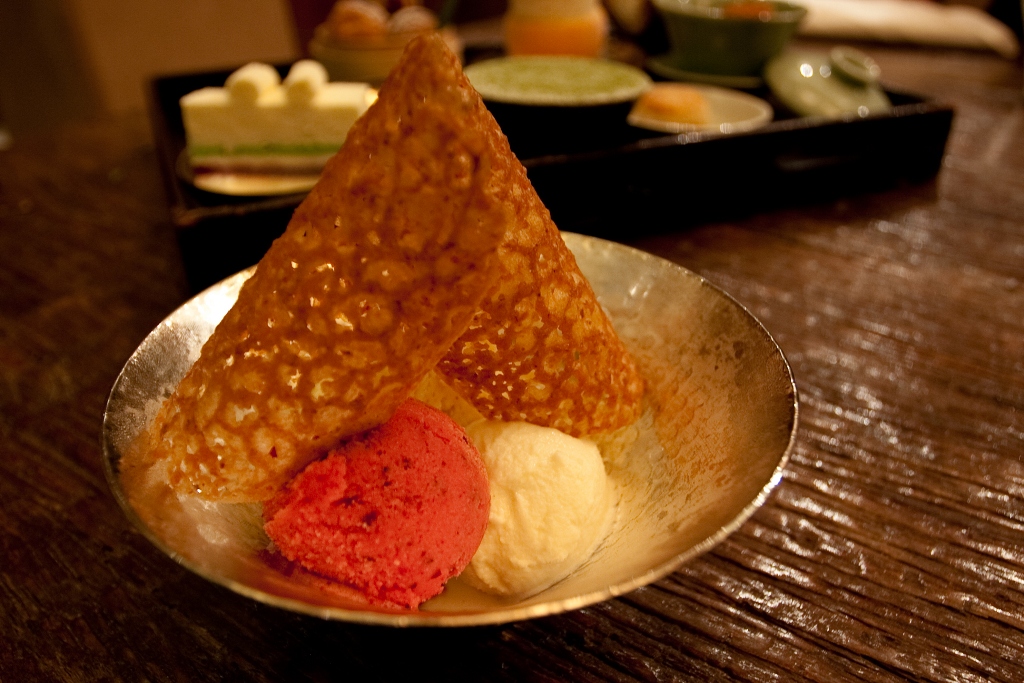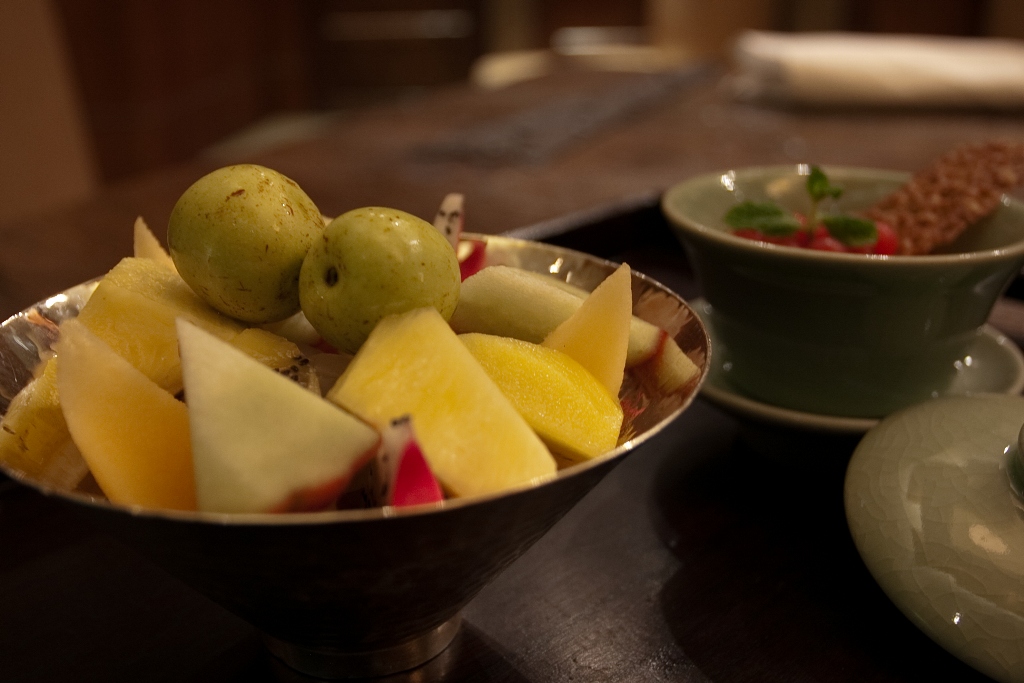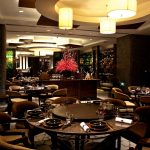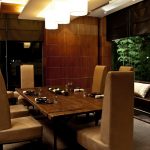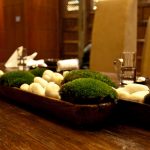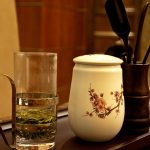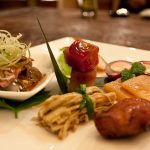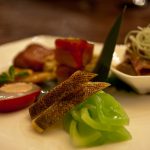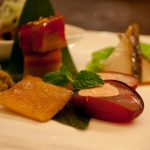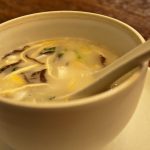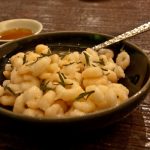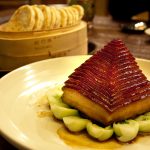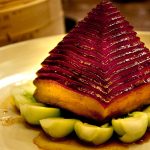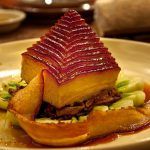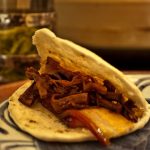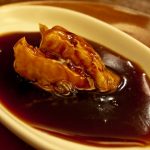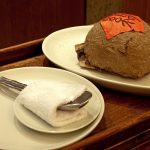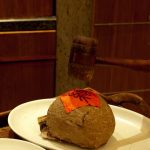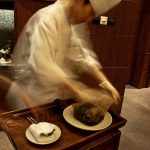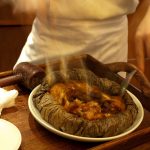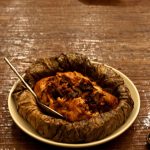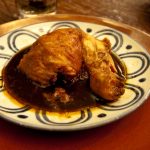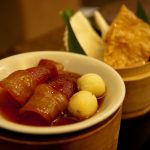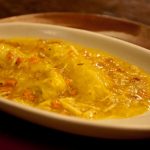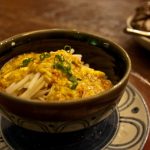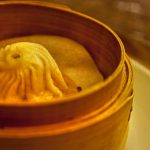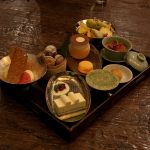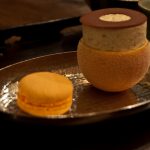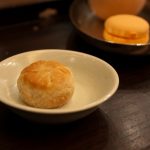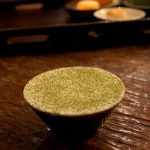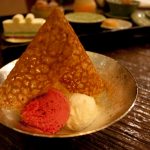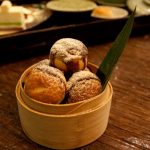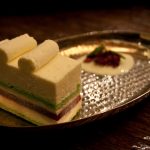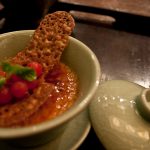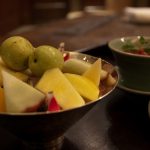Shanghai is surrounded by many of the best-known scenic towns in China. A 40-minute train ride allowed us to escape the busy financial hub and arrive at HangZhou, a poetic city famous for its landscape as well as its cultural heritage. Here we saw no more streets packed with skyscrapers, but rather a landscape dominated by willow trees, pagodas, and of course one of the most picturesque spots in China, the West Lake.
Situated on the east bank of the lake, the Hyatt Regency has some of the most amazing rooms in the city offering stunning lake views. Although we were impressed by the natural scenery of this charming city even after a short stroll along the lakeside, what attracted us here was actually the restaurant on this hotel’s ground floor, which many consider it to be the best in China!
Just like a few other Hyatt hotel restaurants in China, the name of this restaurant is simply the address of the hotel, 28 HuBin Road. The entrance is dominated by an ancient Chinese horse cart which stands in contrast with a modern dining area while providing a sense of the traditional residential courtyard. Since HangZhou is renowned for its fine tea plantation, the meal began with a proper tea ceremony accompanied by an eye-appealing cold platter – crunchy enoki mushroom, crispy fried radish, smoky fish, aromatic beef, sweet sticky rice cubes with lotus root, and an amazing slow-poached quail egg with the yolk replaced by foie gras mousse. This selection of traditional and innovative appetizers was a real treat!
The menu had a wide range of dishes, but for a meal in a city so rich in culture, I was keen on sampling the classics of the region, like the Lady Song’s fish soup and the Dragon Well Shrimp.
SEE PHOTOS SHARE YOUR VIEW
It was the two main courses that set this restaurant apart from the rest. The first was the legendary Beggar’s chicken – a stuffed whole chicken wrapped in layers of lotus leaf and covered with clay before baking for an hour. Initially, I hesitated to order this dish, as I have had many disappointing experiences with it in other restaurants – overly dry meat with bitterness from the preserved stuffing. Surprisingly, I was completely enlightened by the result here. The bone fell off with just a gentle touch, and the meat was juicy, packed with the flavours of rice wine and soy sauce along with the seductive fragrance of sesame oil, star anise, ginger, and all the good stuffing, finished with a hint of sweetness on the palate. It was as good a chicken could possibly get! This chicken really changed my impression of this traditional dish forever. I later learnt from the former Executive Chef, Peter Zhou, that he had experimented with more than 200 recipes in order to fine tune this Beggar’s chicken to perfection. The astonishing result justifies the effort. Truly impressive!
Next was the restaurant’s signature Dongpo pork that comes with a small basket of pancakes. It was an eye-catching braised pork belly layered up into a pyramid! This plating is a result of meticulous knife work that involves slicing the pork belly along the edge into a single long strip before rolling it back to form this shape. A spectacular masterpiece! This dish was also featured in an episode of the food and travel series “Rhodes across China”.
We unravelled this pyramid by picking up the outer end of the strip and detaching it with a slight pull. That’s how thin it was! The pleasure began with a subtle sweetness from the warm chestnut pancake, followed by the deep savouriness of the marinated crunchy shredded bamboo shoot, then came the fully braised soft meat saturated with the aromatic sauce. Once the thin layer of fat started melting in our mouths, we immediately understood why this was the iconic dish of the restaurant. It was impossible to not enjoy this dish! The best part was that the dish wasn’t greasy at all, and it kept us wanting more piece after piece. The restaurant’s preparation of this pork would definitely make the famous poet Su Dongpo proud!
It was a flawless meal. Even the simple braised cabbage was exceptional! The cabbage was precisely timed so that it was just soft enough to soak up all the flavours from the crab roe, transforming a plain vegetable into a delicacy! It was an example of a simple but perfect dish.
Much like the cold sampler that started the meal, the dessert was a platter combining both the traditional and the modern worlds. It was a thoughtful selection of desserts, in particular the crème brûlée of Dragon Well Tea, a notable variety of green tea that the city is renowned for, and the ice cream of Osmanthus, the city flower of HangZhou. There was no better way to make our journey more memorable than leaving these elegant flavours of the city on our palates!
We came across many top restaurants in China delivering good food but poor service. I was delighted to see that this wasn’t the case here. The staff were well trained and certainly understood that their job was not merely to bring food out to the table. We appreciated not only the smooth service throughout the meal, but also the legends behind many of the local classics told by the staff which made each dish come alive! This restaurant undoubtedly provides a comprehensive world class fine dining experience.
A famous Chinese saying, “Up there is heaven, down here is HangZhou”, what we had must be the cuisine of paradise! Albert Wong, the ex-Chairman of 50Best China Region, once suggested that 28 HuBin Road is probably the best restaurant in China. I would be surprised if there is a better one!
